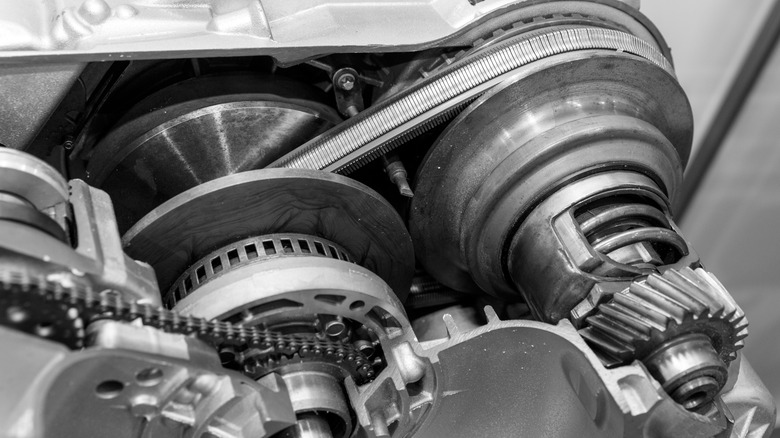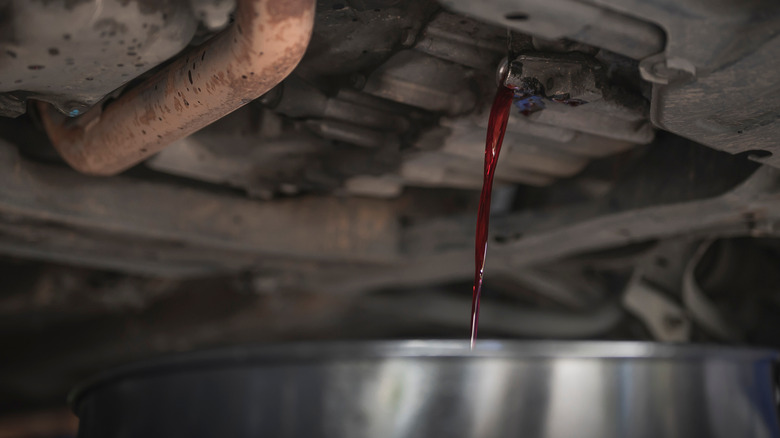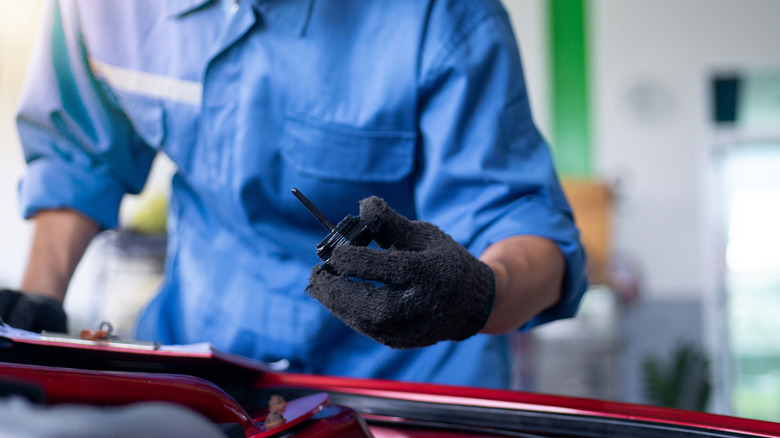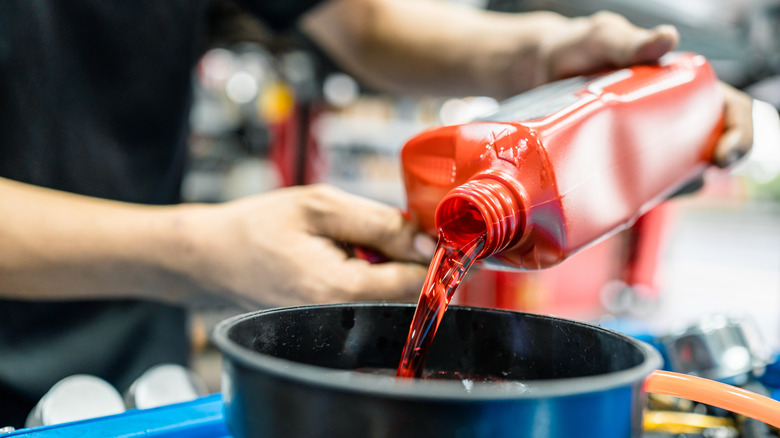5 Tips To Maintain Your Car's CVT Transmission
Do you have a tiny, fuel-efficient car? Most subcompact vehicles are top picks when it comes to gas mileage, in part thanks to their automatic continuously variable transmissions, or CVT. So what is a CVT? Long story short, a CVT differs from a standard transmission because they use pulleys and belts/chains to manage gear ratios instead of fixed gears. CVTs are known for their flexibility and fuel efficiency, making them ideal for use in small- and mid-size vehicles. You'll find them in everything from the Polaris RZR to the Toyota Corolla.
Like all parts of your car, the CVT requires regular maintenance. Many of the problems seen with CVT transmissions can be blamed on inadequate upkeep — likely because many people don't know how to care for this specific transmission. However, certain CVTs have notoriously bad transmission problems.
In this case, doing your regular maintenance is even more important to protect your vehicle from future trouble. However, CVTs require a different maintenance schedule from the traditional gearshift-type transmission. We've collected five tips to help you make sure you're doing the work required to keep your vehicle's CVT running smoothly.
CVTs need specific transmission fluid
This may not come as news to seasoned drivers, but it's important to remember that most vehicles rely on a variety of fluids to function. From engine oil and coolant to brake and transmission fluids, each plays an important part in ensuring your car runs smoothly and efficiently. Understanding what these fluids do, how often they need to be checked or replaced, and how to identify potential issues is essential for extending the life of your vehicle and avoiding unnecessary repairs. Regular maintenance can make all the difference between a car that lasts for decades and one that breaks down perpetually.
This brings us to the first tip: CVTs require CVT oil, which is a specific type of transmission fluid that's totally different from what's used in traditional automatic or manual transmissions. This is important because mixing transmission fluids can destroy your car and lead to transmission failure. Always consult your vehicle's owner's manual to find the exact fluid specification. Never assume or guess — it's not worth the risk.
Check transmission fluid regularly
Many drivers tend to overlook transmission fluid when performing routine vehicle maintenance, instead focusing on fluids like engine oil or coolant. However, keeping an eye on your transmission fluid is just as important for the health and longevity of your car — especially for CVTs, which tend to need fluid replacements more frequently than other transmission types. Most vehicles are equipped with a transmission dipstick, which makes it relatively simple to check both the fluid level and its condition. If your vehicle has one, it's wise to inspect the transmission fluid every few thousand miles or at least once a month.
Low transmission fluid can result in overheating or complete transmission failure. Likewise, old or contaminated fluid can accelerate wear. Signs of trouble include fluid that is dark brown or black in color, or smells burnt. In contrast, clean transmission fluid should appear bright red or pink and have a mild, almost sweet smell.
Get your transmission fluid changed
Just like engine oil, transmission fluid should be replaced periodically — normally around every 60,000 to 100,000 miles. As it ages, transmission fluid can break down due to heat and friction and may begin to collect debris from inside the transmission system. These particles can impair the fluid's ability to lubricate and cool the transmission system properly. This is especially problematic in a CVT, where fluid quality is crucial to smooth and efficient operation.
While a CVT fluid replacement can feel expensive upfront — sometimes costing a few hundred dollars — it's a small price compared to the thousands you might spend repairing or replacing a damaged transmission. Skipping this maintenance can lead to performance issues like shuddering, slipping, or hesitation when accelerating. Regular fluid changes not only extend the life of your CVT, but also help preserve your vehicle's fuel efficiency and overall drivability.
Avoid abusing your vehicle
Avoiding unnecessary stress on your vehicle is one of the best ways to protect it — especially the transmission. A prime example of vehicle abuse is towing or hauling loads that exceed your car's rated capacity. CVTs are designed for smooth, fuel-efficient driving, but they're not always built to handle the demands of heavy towing.
Overloading a vehicle with a CVT strains the transmission system, leading to excessive heat buildup, fluid breakdown, and long-term damage. If you're planning to tow, always consult your owner's manual to verify your vehicle's towing capacity. Exceeding these limits — especially on hills, in hot weather, or over long distances — can drastically shorten the life of your CVT.
It's worth mentioning that some CVTs are safe to use for towing. However, never assume yours is one of them without checking. Use proper towing equipment, allow your engine and transmission to cool during extended use, and avoid sudden acceleration while towing. Being mindful of how you use your vehicle under load can keep your CVT performing reliably for years.
Don't have a lead foot
Beware of having a lead foot — punching the gas pedal might feel powerful, but it's one of the fastest ways to wear out your transmission. When you stomp on the accelerator, the CVT is forced to rapidly adjust the pulley ratio, which puts extra stress on the system. Instead, accelerate smoothly and gradually to give the pulleys time to respond without unnecessary stress. As the saying goes: drive it nice, and you'll keep it nice.
While avoiding bad driving habits can extend the life of your CVT, proper maintenance is what truly keeps any transmission in good shape. That means following the recommended fluid change intervals, using the right type of fluid, and avoiding heavy loads unless your vehicle is rated for towing.
The good news is that CVTs have come a long way. Modern designs are more durable and fuel-efficient, with steel or steel-reinforced belts replacing older rubber ones. With regular maintenance and thoughtful driving, today's CVTs can be just as dependable as traditional transmissions and more efficient.





